At some point, every traveller has imagined themselves as a fedora-sporting adventurer discovering hidden treasures. Even though most of our expeditions now involve sipping a hot mocha-latte in an airport lounge, we still crave the adrenaline rush of swinging a machete through tangled jungle toward a mysterious destination.
In these days of jet-set globetrotting there aren’t many corners of the world left to be discovered. Many of the globe’s lost wonders are now thoroughly found and firmly marked on the map; some can even be explored on Google Streetview.Some of these landmarks represent the fall of mighty civilisations, populations erased by warfare or the might of Mother Earth. Centuries after being abandoned, these ruins can stand testament to the might of fallen empires.
Petra’s place as a trading powerhouse is marked by columns standing in the sand, Troy evokes legendary heroes and Angkor’s temples stand at the heart of a forgotten kingdom.
Some of these sites are mainstays of backpacker trails, others are little known gems to appease your adventurous spirit. Join us for a tour of lost cities; maybe it’ll make you want to move to one of them.
The world famous “rose red city, half as old as time” is cut into rocky cliffs that stand in the baking Jordanian desert. Thriving from the 6th Century BC until 1189, Petra was the might capital of the Nabataean kingdom and a key trading post for merchants plying their wares across the middle east.
Pliny the Elder wrote of the city’s wealth and impressive architecture of mighty columns cut into the natural fortress of red rock. The Nabataens’ skill allowed them to control the flow of water in the area, establishing a system of aqueducts and reservoirs to sustain the population.
As Saladin’s armies marched through the holy lands in the 12th Century, Petra was abandoned, only rediscovered when Swiss explorer Johann Ludwig Burckhardt infiltrated Bedouin tribes in the 1800s. Steven Speilberg chose the forgotten city to provide a home to the Holy Grail in the blockbuster Indiana Jones and the Last Crusade.
As a UNESCO World Heritage Site, entry to Petra is controlled and tickets cost US$70 for access and to stay overnight. It’s possible to walk to the site from town and motor traffic is prohibited, so riding in on horse or camel might fulfil the Lawrence of Arabia fantasies. Just be careful as the horsemen offer a “free” ride in return for a hefty tip.
Entry to the site is through a narrow rock fissure known as The Siq, which opens spectacularly onto this legendary location.
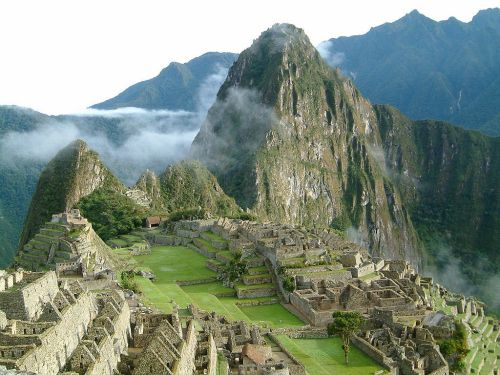
© Allard Schmidt
High up in the cloud-cloaked Andes, perched atop a 1,000-foot cliff, stands ‘The Lost City of the Incas’, Machu Picchu.
Another UNESCO site, the city is the main event on the Inca Trail, South America’s most popular hiking route. Only discovered in 1911, the site is still the cause of much speculation, with one theory suggesting it was a luxury resort for high-ranking Inca aristocracy.
Hidden in the hills and protected by watchtowers, the city only supported a small population of 750, a number that shrunk even further during the rainy season. The Incas only occupied the site for about 100 years, abandoning it in 1430 when Spanish Conquistadors overthrew the Inca Empire.
A tough, high altitude trek is how most visitors access the site, either under their own steam or with the help of guides and support crews. It is strongly advised that you make use of local expertise, as overly ambitious climbers are regularly treated for injuries and altitude sickness.
A popular tourist attraction, the city is regularly swamped by coach parties in the high season; but an early morning tour in February may mean you have Machu Picchu to yourself. Whenever you go, book ahead as access to the city is limited and tickets cannot be bought from the site itself.
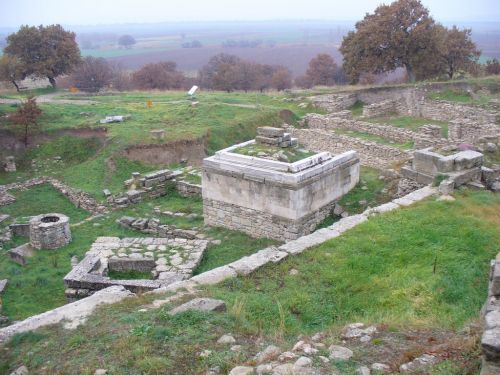
© QuartierLatin1968
Troy, the ancient city synonymous with action, intrigue and the fabled beauty of Princess Helen. Homer’s epic poem The Iliad made the city’s reputation immortal, even if its building would eventually fall to ruin, buried by the sands of time.
The archaeological record shows a city in Northern Turkey as far back as the third millennium BC, controlling the gateway between Europe and Asia. By the 12th Century BC this city had evolved to become Troia, the mighty city-state made famous by Homer. Although the classical tale may be fiction, the city ruins show signs of warfare at around the same time Achilles and Hector were supposed to have battled.
Over the centuries, Troy disappeared and was thought to be purely fictional until in 1868, German archaeologist Heinrich Schliemann uncovered part of the city.
Excavations are still on going and much of the site is yet to be explored. So far it looks as through Troy was destroyed and rebuilt at least nine times over the ages, giving a rich variety of finds.
The dry, rocky ground can make for unsteady walking, so be sure to wear strong hiking boots when exploring the site. Weekends and wintertime are the best times to visit Troy, which is a popular attraction for Turkish families and school parties during summer.
Be sure to head to Mount Ida, close by to the south. From this peak the gods of Ancient Greece watched the Spartans sneak into Troy inside their giant wooden horse before rasing the city to the ground.
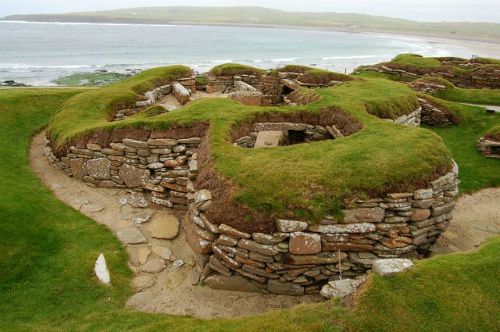
© John Allan
Off the northern coast of Scotland sit the windswept Orkney Islands: rocky outcrops standing in the angry North Sea where only the hardiest of beasts and men can scrape a livelihood.
Yet it’s on these islands that an ancient civilisation was producing fine pottery before Stonehenge was begun or the first stone laid for the Pyramids of Giza. The ruin of Skara Brae dates back to 3200BC and holds some of the world’s best preserved Neolithic dwellings.
Ancient inhabitants of the site dug their homes into the ground to escape the unrelenting punishment of wind and rain, a design feature that has helped preserve the site for today. In a site that housed only around 50 people, Skara Brae’s residents left evidence of their craftsmanship with ornamental furniture and jewellery, as well as a complex plumbing system which furnished each home with a form of indoor toilet.
Only discovered in the 1850s after a storm washed away topsoil covering the structures, the settlement is now a UNESCO site and is intensively studied by archaeologists.
It’s possible to fly to Kirkwall in the Orkneys from Edinburgh and Glasgow or to reach the islands by ferry from Aberdeen. From Kirkwall a short drive to the site can also be used to visit the Standing Stones of Stenness, Britain’s oldest stone circle.
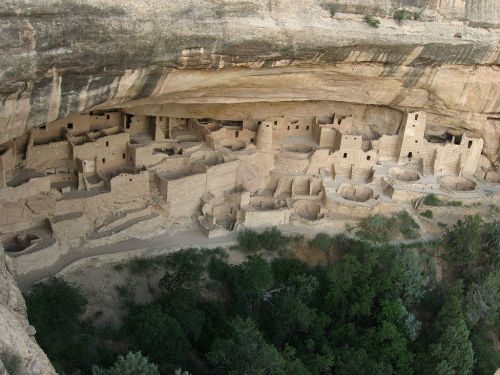
© Jacopo Werther
Cut into the cliffs of Mesa Verde National Park are over 600 dwellings, some mud structures which date back to the year 800.
Not much is known about the Mesa Verde people who lived in these buildings, other than that during the centuries they occupied the area their numbers thrived and dwindled several times.
The buildings that still stand make up homes and palaces, aquifers and temples. The most famous of these is perhaps the cliff house, a luxurious building 100ft below the cliff top, which can only be reached by climbing ladders down the precipice.
Visitors should sign up for guided tours with park rangers who can explain the history and ensure safe passage through the warren of tunnels and platforms.

© Grossbildjaeger
The ancient mega-city of Angkor was once the capital of the booming Khmer Empire which covered modern-day Cambodia, Laos, Thailand and Vietnam.
From the 9th to 15th Centuries, the citadel was home to almost 0.1% of the whole global population, with the Angkor Wat temple complex at its focus.
An empire ruled by god-kings, the pre-Hindu temple boasts mighty towers and a surrounding moat, echoing creation myths of mountains appearing from above the seas.
Later converted into a Buddhist shrine, the citadel was raided by invaders and by the end of the 1430s the site was largely abandoned and overgrown by the rainforest.
Angkor Wat is now Cambodia’s leading attraction, with more than two million visitors a year exploring the complex. There are concerns that this level of traffic will degrade the site, as visitors climb over the preserved buildings. A bigger threat comes from hotels being built in the area, pumping water out from under the citadel, causing instability that could topple its iconic towers.
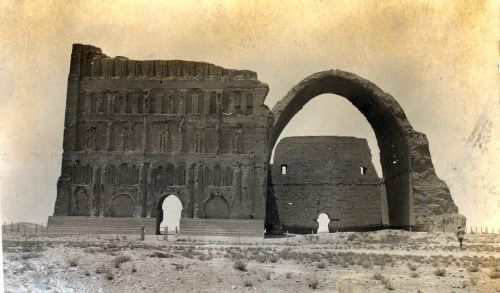
© San Diego Air & Space Museum
Ctesiphon was once the largest city in the world, nestling in the cradle of civilization itself. One of the great cities of the Mesopotamian Empire, the city has been the turning point of imperial battles throughout the centuries, a fact that remains true even now, as the site lies just outside modern-day Baghdad.
Once over 30 square kilometres in size, all that remains of this once mighty city is the archway of Chosroes. The arch is really a portion of the throne room in the city’s palace. At 30 metres high, the structure must have been impressive when built in 540AD, and is still the largest single-span vault of unreinforced brickwork in the world.
The city was fought over by the Parthians, Sassanids, Romans, Byzantines and Arabs. The city’s ruins were even the site of a major battle in World War I, when Ottoman troops forced British forces to surrender.
Baghdad is still an extremely unsettled part of the world, with battles and bombings on a regular basis. Only visit Iraq as part of an organised tour that includes armoured vehicles and close protection teams. These kinds of extreme travel agents do exist, but be sure to research them thoroughly before you book.
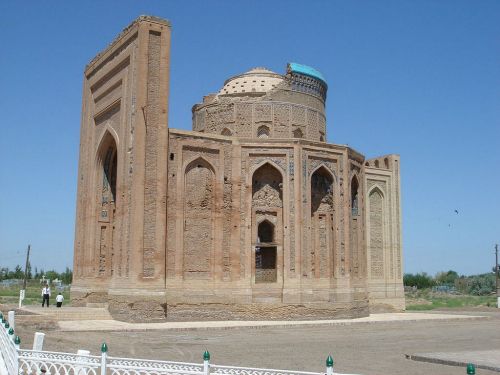
© Tim Williams
Sitting on the border between Uzbekistan and Turkmenistan, Kunya Urgench was once an important stop on the Silk Road. The city was a place where wealth, science, culture and ideas could meet and mingle freely, resulting in a thriving town between the 10th and 14th centuries, replete with minarets and market places alongside temples and fortresses.
An intellectual capital, the city was raided by Genghis Kahn in 1220 and suffered the bloodiest massacre in human history. The city recovered and thrived again until the 16th century, when a change in the river’s course forced the population to abandon the city almost overnight.
Now just a few hints at the city’s former glory remain above the sand, including the 60m Kutlug Timur Minaret and the ornately mosaics of Turabek Khanum Mausoleum.
Uzbekistan is not widely travelled and can require some complex visa applications, but once in the country, it promises to offer a truly adventurous experience.
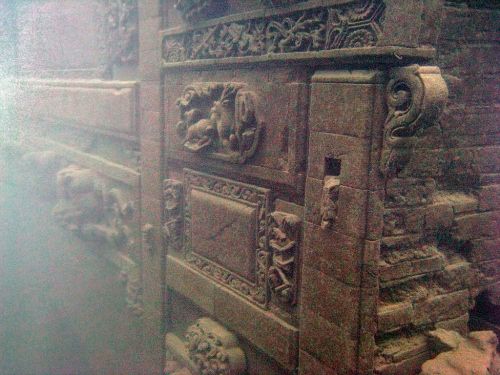
© Nihaopaul
Most of the cities on this list were lost to history centuries ago and then rediscovered, but Shicheng only disappeared in 1959. The Tang dynasty city slipped beneath the waters of a giant man-made lake and can only be visited by divers.
The Lion City features 265 arches with gates and watch towers, sculptures and carvings, all under 25ft of calm green water. Wooden houses stand perfectly preserved in the frigid lake.
This is a unique opportunity to swim through a lost city and float above its ghostly houses, however the dive should only be attempted by experienced divers.
Expeditions are run by local guides who may refuse to take novice divers, as visibility in the water can be limited and any silt stirred off the bottom can pose a risk to the whole party.
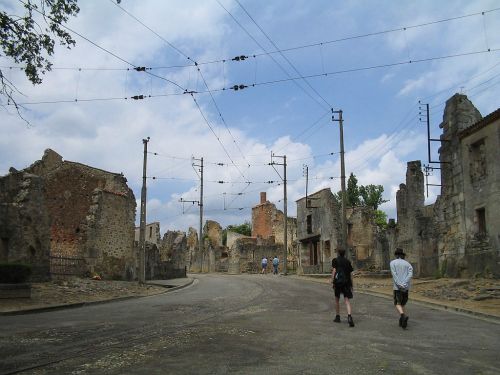
© Dennis Nilsson
This lost city should be regarded as a monument to its population.
Oradour-sur-Glane was the site of a World War II massacre in which Waffen-SS troop killed over 600 civilians and destroyed the town. Men, women and children were machine gunned and burnt alive in an afternoon of brutal slaughter.
Following VE Day, General Charles de Gaulle decreed that a new village should be built to house the survivors, and the shattered remains of the old town would stand testament to the ‘martyred village’.
The empty streets are still littered with the husks of parked cars and powerlines, for trams remain above the roads. 300,000 tourists visit the site each year, moved by this giant crime scene.
Oradour-sur-Glane is an eerily peaceful town: a bustling community forever silenced by a single afternoon of brutal violence.
Are there lost cities or historical sites near where you live? Have you visited any of these places? Let us know in the comments!
Article by Andy Scofield

